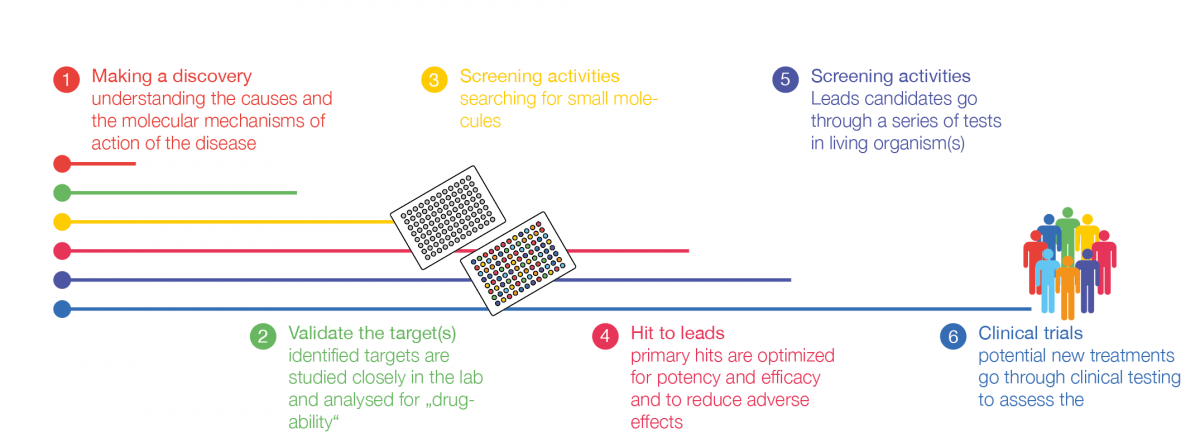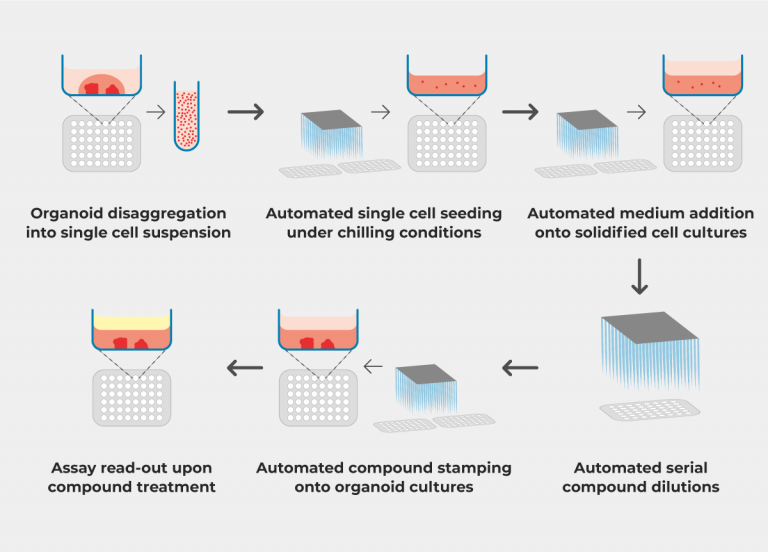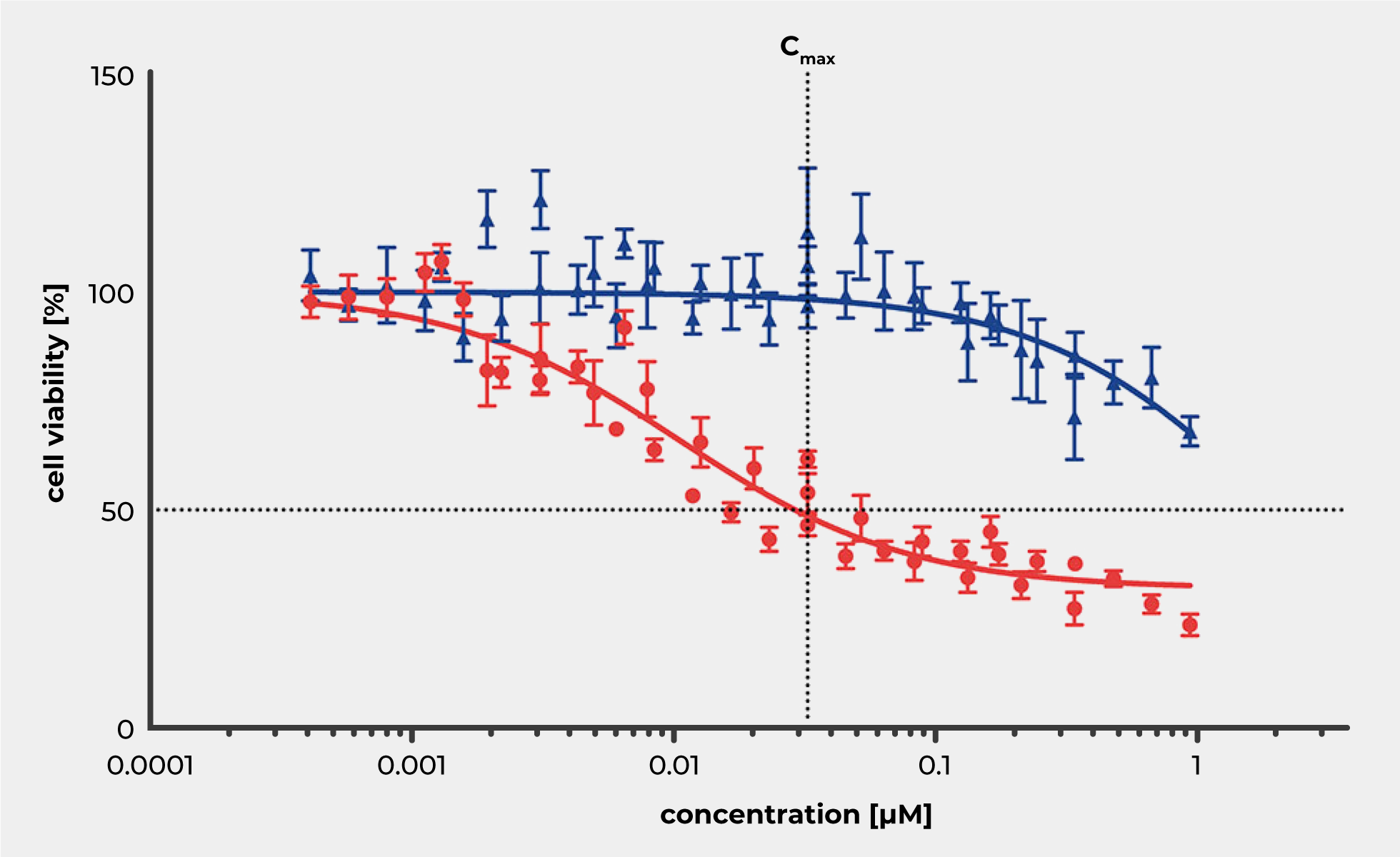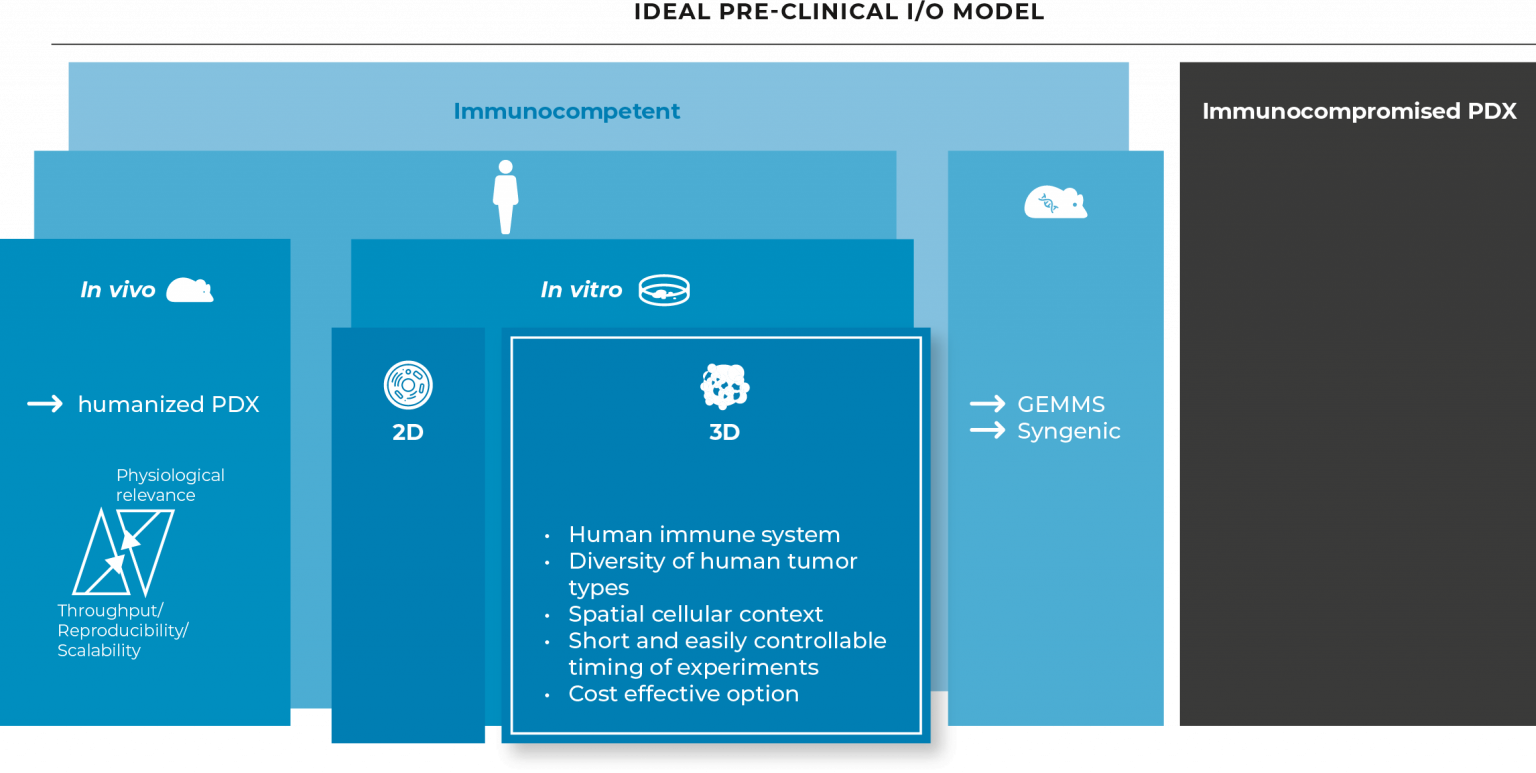PD3D® MODELS
What makes CELLphenomics' platform unique?
CELLphenomics has developed a custom high-throughput screening platform that blends complex cell culture models with advanced automation and a streamlined analysis pipeline. This platform has been optimized to analyze drug sensitivity across many drug classes in primary patient tissue derived 3D cell culture models. CELLphenomics‘ high-throughput screening readout includes measures of any plate-based read-out such as cell viability and apoptosis. Additionally, CELLphenomics combines the data produced by its screening platform with valuable patient clinical and -omics information, allowing more complex analyses to be performed. For phenotypic screening CELLphenomics uses an automated laser-free confocal microscopy platform allowing for time-lapse experiments and automated imaging of up to 384 well plates. Both technologies are backed by a living biobank with currently more than 600 PD3D® models from all major solid tumor types, including common cancers like colon, lung or breast as well as rare and ultra-rare cancers such as sarcomas.
Target centric vs. phenotypic screening

Target centric screen
- high degree of parallelization
- reliable prediction of toxicity
- exploits benefits of polypharmacology
Phenotypic screen
- chain of translatability
- molecular phenotyping
- interaction of complex models
High-throughput screening
High-throughput screening (HTS) is especially used in drug discovery. Using robotics, data processing/control software, liquid handling devices, and sensitive detectors, high-throughput screening allows to conduct hundred of tests in parallel. CELLphenomics uses its semi-automated screening platform to quickly recognize active compounds, antibodies, or genes that modulate a particular biomolecular pathway. The results of these experiments can provide starting points for drug design, understanding the non-interaction or role of a particular location or help selecting specific genomic backgrounds for cohort stratification in later phases of the drug development pipeline.

Biomarker discovery & validation
Case study: Bioassay validation supporting international patent application
CELLphenomics developed and fully validated a human primary cell-based assay for screening RAS-independent MEK inhibitors.
Details:
- PD3D® assay
- colorectal cancer cells from a therapy naïve stage III colon carcinoma
- fully sequenced
Assay development included:
- reference standard inhibitor
- titration of effective dose
- selection of upstream and downstream inhibitors

High content screening
High-content screening (HCS) is used to identify substances such as small molecules, peptides, or RNAi that alter the phenotype of a cell in a desired manner. Hence high content screening is a type of phenotypic screen conducted in cells involving the analysis of whole cells or components of cells with simultaneous readout of several parameters. Phenotypic changes may include increases or decreases in the production of cellular products such as proteins and/or changes in the morphology of the cell.
In high content screening, cells are first incubated with the substance and after a period of time, structures and molecular components of the cells are analyzed. The most common analysis involves labeling proteins with fluorescent tags, and finally changes in cell phenotype are measured using automated image analysis. Through the use of fluorescent tags with different absorption and emission maxima, it is possible to measure several different cell components in parallel. Furthermore, the imaging is able to detect changes at a subcellular level (e.g., cytoplasm vs. nucleus vs. other organelles). Therefore, a large number of data points can be collected per cell. In addition to fluorescent labeling, various label free assays can been used in high content screening.
Immuno oncology
Cancer immunotherapy comes in a variety of forms, including targeted antibodies, cancer vaccines, adoptive cell transfer, tumor-infecting viruses, checkpoint inhibitors, cytokines, and adjuvants.
Select the best model matching your scientific question

















